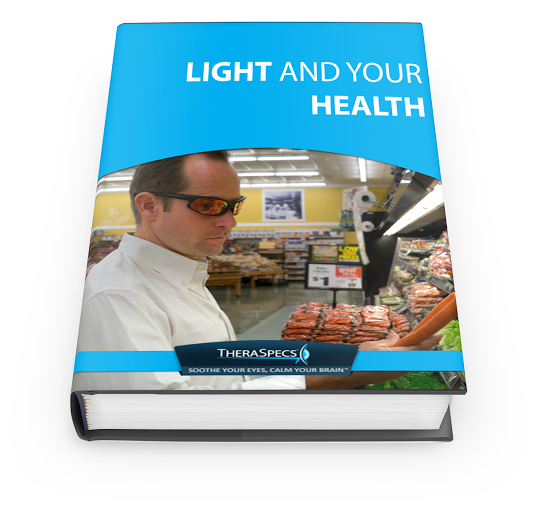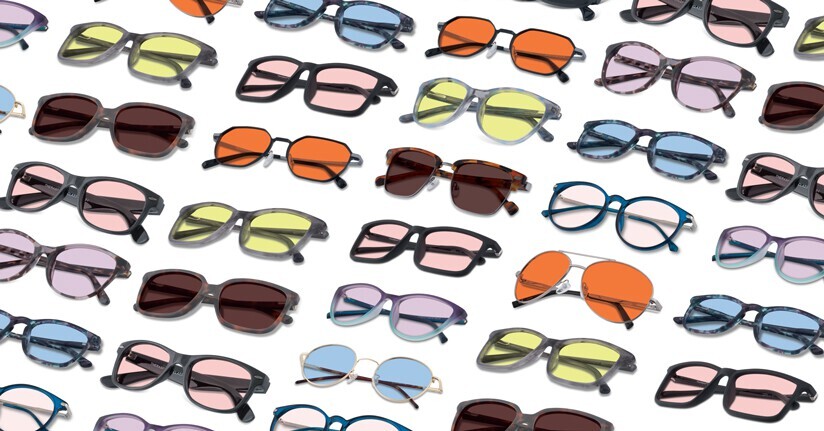What light bulbs are best for someone who is sensitive to light?
With incandescent bulbs becoming increasingly difficult to obtain, fluorescents (CFLs, specifically) are usually the recommended alternative. To people who feel ill when exposed to fluorescent light or are generally sensitive to light, CFLs aren’t an option. So what light bulbs are best? There are pros and cons to each type.
Before getting into the details of different types of light bulbs, we have to discuss blue light. Studies show that blue light causes the most problems who are sensitive to light, even for people who are blind. TheraSpecs lenses filter the blue wavelengths of light which is shown to provide the most relief from photophobia in studies.
Not everyone wants to wear their TheraSpecs all the time and they also don’t want to expose their families to potential issues from fluorescents. Here are the pros and cons of different residential light bulbs:
Incandescent Light Bulbs
Pros: Provide a warm glow, give off little blue light Cons: Not energy efficient, difficult to find, often expensive
Fluorescent Light Bulbs (tubes and CFLs)
Pros: Energy efficient, inexpensive, longer life than incandescents Cons: Shed a lot of blue light, have an invisible pulsing/flicker
Cool White LED Light Bulbs
Pros: Long lasting Cons: Emit the highest amount of blue light of all artificial light sources, expensive (though the price is dropping with time), might have an invisible flicker (hard for the consumer to tell if it does or not), often have a humming or buzzing sound
Warm White LED Light Bulbs
Pros: Emit low levels of blue light, long lasting Cons: Expensive (though the price is dropping with time), might have an invisible flicker (hard for the consumer to tell if it does or not), often have a humming or buzzing sound
Halogen Light Bulbs
Pros: Emit the lowest levels of blue light of any standard bulb Cons: Exceptionally bright, expensive, not very energy efficient
You can see why choosing the best light bulb is difficult. After extensive tests, we use warm white LED light bulbs from Ikea at TheraSpecs headquarters and at home. They do not hum or whine, the light is pleasing to the eyes and low in blue emissions, and, at less than $5 a bulb, are the least expensive LEDs we’ve found. Although we don’t know for sure whether or not they have an invisible flicker, we personally don’t have trouble with them. Ikea’s bulbs are available in different sizes and brightness levels and can be used in standard light bulb sockets. A drawback for some might be that they don’t dim, but this is a plus in our eyes because dimming an LED bulb will cause it to pulse.
Download our free light sensitivity e-book!

References
Tatsumoto M, Eda T, Ishikawa T, Ayama M, Hirata, K. Light of intrinsically photosensitive retinal ganglion cell (ipRGC) causing migraine headache exacerbation. International Headache Congress Symposium OR3. 2013 June.
Blackburn MK, Lamb RD, Digre KB, Smith AG, Warner JE, McClane RW, Nandedkar SD, Langeberg WJ, Holubkov R, Katz BJ. FL-41 tint improves blink frequency, light sensitivity, and functional limitations in patients with benign essential blepharospasm. Ophthalmology. 2009 May;116(5):997-1001.
Good PA, Taylor RH, Mortimer MJ. The use of tinted glasses in childhood migraine. Headache. 1991 Sep;31(8):533-6
Sun J. Pulse width modulation. In Vasca F & Iannelli L (Eds.), Dynamics and control of switched electronic systems. 2012. Springer-Verlag: London.
Photo by James Lee

TheraSpecs® Glasses for Light Sensitivity
Find the glasses that fit your needs and lifestyle, and stay protected from screens, fluorescents, unwanted blue light, sunlight, flashing lights, and more.
Shop Now



